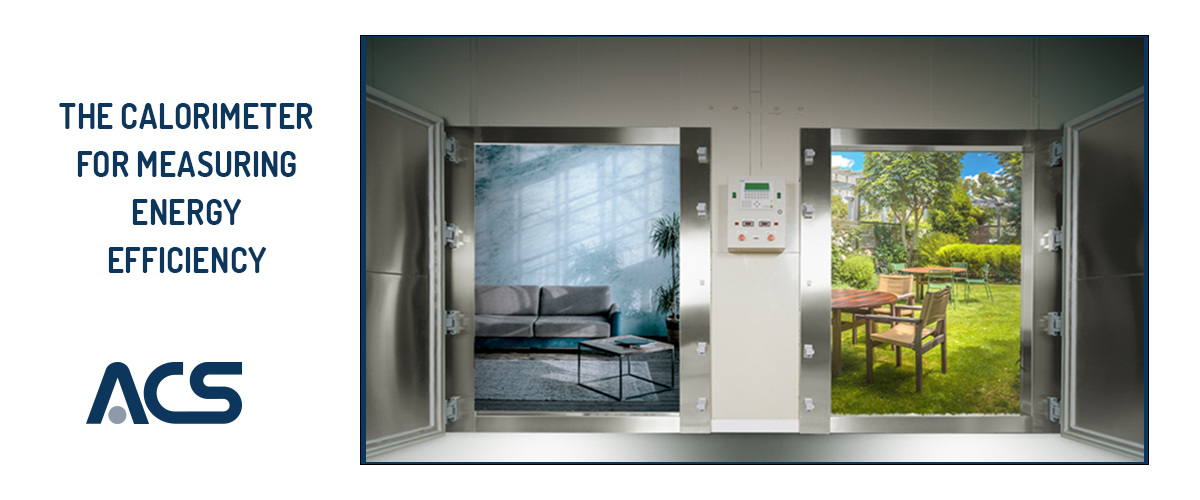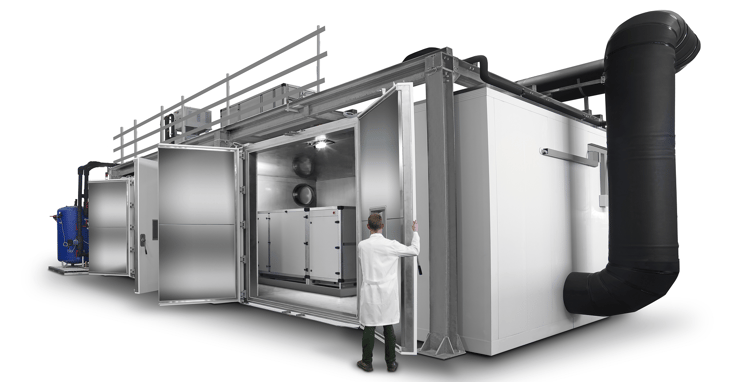
The calorimeter for measuring energy efficiency
Less energy consumption without compromising on performance. The laboratory instrument that is used to assess energy efficiency is the calorimeter.
Energy efficiency is increasingly at the center of studies and debates thanks to its contribution to environmental sustainability: energy consumption optimization helps to reduce the impact on the environment.
The objective of energy efficiency is to allow an organization to consume less energy to produce the same level of outputs. Less energy consumption without compromising on performance.
There is a trend to pursue energy efficiency in many areas; in this article, we will focus on the application of this concept to air conditioners or heat pumps and buildings.
The laboratory instrument that is used to assess energy efficiency is the calorimeter.

The calorimeter for air conditioners and heat pumps characterization
The calorimeter is an instrument used to measure the amount of heat produced or used by a thermal machine, e.g. an air conditioner. Evaluating the performance of electrical air-conditioning and heating machines in relation to the energy consumed makes it possible to ensure living comfort while optimising consumption.
A calorimeter can provide precise information on a thermal equipment performance thus identifying possible problems and actions to be taken to improve energy efficiency.
How a calorimeter works
The temperature of the indoor and outdoor environment has a strong influence on the performance of devices. It is therefore necessary to characterise the air conditioner or heat pump in relation to the indoor and outdoor environmental conditions.
A calorimeter is composed of three main parts: two rooms, i.e. two climatic chambers, one simulating the indoor environmental conditions and one simulating the outdoor environment. The third fundamental element is the measuring system, i.e. a system consisting of a sensor package and a software evaluating the performance parameters in real time, without the need for manual calculation operations.
The calorimeter therefore has two basic requirements:
- Simulate test conditions in accordance with current regulations;
- Measure the performance of the specimen, i.e. the air conditioner or heat pump.
Air conditioner manufacturers are required to indicate the product performance measured through the calorimeter test cycles, reporting the heating and cooling efficiency parameters, i.e. COP and EER. The terms COP (coefficient of performance) and EER (energy efficiency ratio) refer precisely to the heating or cooling ratio provided by an air conditioner or heat pump based on the input power required to generate it.
There are two categories of calorimeters: the super-precise machines, which are more expensive and require longer test times and are therefore more aimed at research laboratories; the most widely used in industry, which is less demanding in terms of test cycle duration and setting. This second type is also very reliable and is adequate to fulfil the testing regulations.
Thermal transmittance test chambers
Thermal transmittance test chambers follow the same basic concept: it is always about measuring energy efficiency, declined in different ways.
The focus in this case is on insulation, i.e. the thermal isolation of building envelopes. With this machine it is possible to numerically quantify the capacity of these structures to retain heat during the winter and cool during the summer. The higher the capacity of a building to thermally insulate, the lower the energy consumption of fuel or electricity.
As with calorimeters, thermal transmittance test chambers consist of two different areas, separated by a wall that exactly replicates the wall of a building; on one side of the wall, the indoor environment climatic conditions are reproduced, while the outdoor environment is simulated on the other side, recreating exactly what will happen to a wall during its life.
Thermal transmittance test chambers are an essential tool for assessing the environmental sustainability of buildings. Depending on the desired functionality, a building envelope can be tested against a large number of external factors such as cold, humidity, wind, rain, solar and infrared radiation, and internal factors such as temperature, humidity, natural and forced air convection, vapour and air permeability.